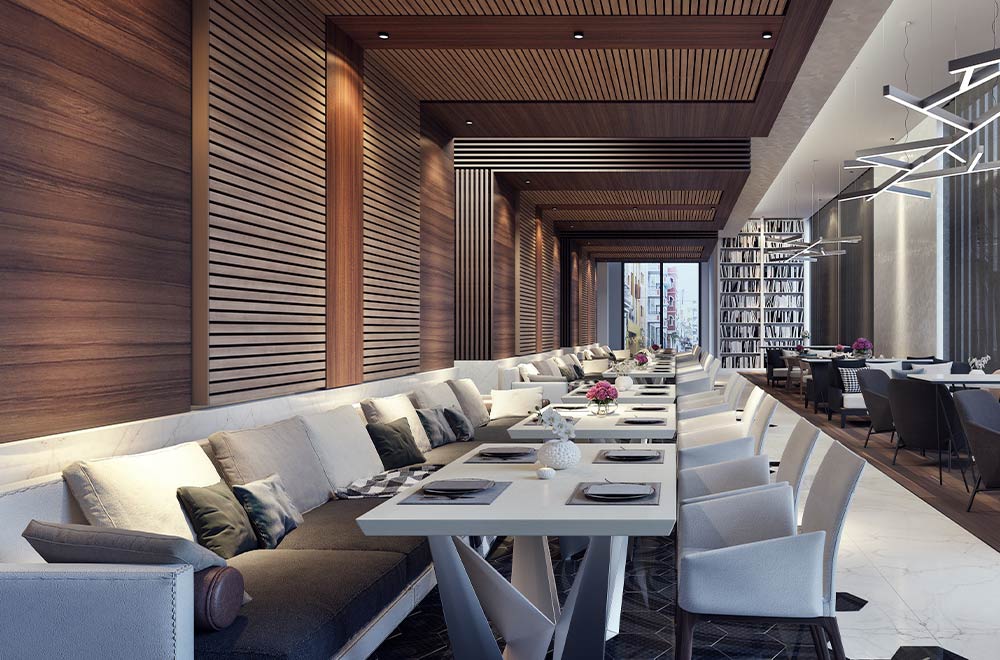Pan Asian Dining Islamabad: Appreciate Authentic Asian Recipes
Pan Asian Dining Islamabad: Appreciate Authentic Asian Recipes
Blog Article
Savor Genuine Eastern Food With a Pan-Asian Spin for a Culinary Journey
Starting a culinary trip with authentic Asian food, improved with a Pan-Asian twist, supplies an one-of-a-kind chance to explore the rich tapestry of flavors that specify the area's varied culinary customs. This experience invites you to savor the beautiful equilibrium of preferences-- sweet, salted, spicy, and sour-- balanced by aromatic herbs and seasonings. Picture the cutting-edge fusion of Thai curry and ramen or the unexpected pleasure of sushi burritos. As you contemplate these tempting dishes, consider the cultural stories and historic impacts that form them, each bite offering a story waiting to be discovered.

Checking Out Pan-Asian Flavors
In the realm of worldwide gastronomy, Pan-Asian cuisine stands out for its exceptional variety and the harmonious interplay of tastes from numerous Asian societies. This culinary strategy commemorates the rich traditions and one-of-a-kind ingredients found across the continent, producing a tapestry of tastes that is both fascinating and enjoyable. Secret to Pan-Asian cuisine is its ability to stabilize different flavors-- sweet, salted, spicy, and sour-- while highlighting the freshness and quality of each ingredient.
From the umami-rich soy sauce of Japan to the intense chili peppers of Thailand, Pan-Asian cuisine uses a considerable palette of tastes. These components are usually combined in creative methods, enhancing recipes with layers of intricacy. For instance, making use of aromatic natural herbs such as lemongrass and cilantro, usual in Vietnamese and Thai cuisine, adds a refreshing brightness to meals, while the consolidation of coconut milk delivers a velvety, rich appearance.
The focus on fresh fruit and vegetables and fragrant spices makes sure that each meal is not just a feast for the palate however also for the senses. Pan-Asian cuisine welcomes restaurants to start a cooking journey, exploring the huge and varied landscapes of Oriental gastronomy with every bite.
Blend Dishes to Try
While Pan-Asian food is commemorated for its conventional tastes, the modern-day culinary landscape is significantly accepting blend recipes that blend these traditional components with impacts from other areas. This innovative strategy not just honors the rich heritage of Eastern cookeries however also presents novel preference experiences that appeal to contemporary tastes buds.
An archetype of such a blend dish is the Korean-Mexican taco, where marinaded bulgogi beef is wrapped in a warm tortilla, covered with kimchi and a zesty gochujang-infused salsa. This mix weds the bold, tasty flavors of Korea with the dynamic, fresh aspects of Mexican food. In a similar way, sushi burritos have actually obtained popularity, joining together the delicate creativity of Japanese sushi with the passionate, hand-held comfort of a burrito, often including combination active ingredients like tempura shrimp and avocado with a drizzle of wasabi mayo.
An additional significant meal is Thai curry ramen, which instills the velvety, fragrant seasonings of Thai curry right into the soothing brew of typical Japanese ramen, developing an unified mix that entices the senses. These fusion dishes extend past mere uniqueness; they stand for a culinary discussion between societies, motivating exploration and advancement worldwide of Pan-Asian food.
Vital Active Ingredients and Spices
To truly value Pan-Asian cuisine, one need to recognize the vital active ingredients and seasonings that create its foundation. This diverse culinary style draws from a rich tapestry of Eastern customs, employing an unified blend of flavors and structures. Trick active ingredients include soy sauce, fish sauce, and oyster sauce, which give a mouthwatering umami deepness necessary to Eastern dishes. Corresponding to these are rice vinegar and mirin, lending a fragile acidity and sweetness.
Fragrant elements are crucial, with ginger, lemongrass, and garlic being ubiquitous across various Pan-Asian recipes. These ingredients supply an aromatic base that improves the intricacy of flavors. Spices such as star anise, cardamom, and cinnamon introduce warmth and personality, echoing impacts from areas like China and India.

Cooking Strategies and Tips
Grasping the art of Pan-Asian cuisine needs experience with its unique food preparation techniques, each adding to the dynamic tapestry of flavors this cooking tradition is commemorated for. Central to these approaches is the stir-fry, a fast food preparation technique that preserves the dietary stability and vibrant colors of active ingredients. Utilizing a wok, the stir-fry approach enables for also warm circulation, vital for accomplishing the characteristic appearance and flavor balance of Pan-Asian dishes.
Another basic strategy is steaming, particularly widespread in Chinese food. This mild approach keeps the natural tastes and nutrients of active ingredients, making it optimal for fish and shellfish and vegetables. Dumplings, a precious staple, typically profit from steaming, causing soft, succulent appearances.
Barbecuing, also integral, presents smoky depths to dishes such as Korean bulgogi or Japanese yakitori (Fine dining experience Discover More Here Islamabad). This strategy frequently entails marinating ingredients, enabling flavors to permeate deeply before cooking over an open fire or warmer
Lastly, understanding the art of stabilizing tastes-- sweet, sour, salted, bitter, and umami-- is critical. Properly layering these elements can boost a dish from average to extraordinary, using a complex and pleasing culinary experience that embodies the essence of Pan-Asian cuisine.
Dining Experiences Worldwide
Throughout the globe, Pan-Asian food supplies an unmatched dining experience, commemorated for its abundant tapestry of tastes and lively discussions. This cooking phenomenon has gone beyond cultural boundaries, recording the hearts and tastes buds of food fanatics worldwide. In multicultural cities fresh York, London, and Sydney, Pan-Asian restaurants work as melting pots where culinary traditions from Thailand, Japan, China, and past assemble, supplying restaurants with an eclectic mix of meals that highlight the region's variety.
The worldwide charm of Pan-Asian food depends on its ability to use both credibility and innovation. Chefs skillfully marry typical ingredients such as lemongrass, soy sauce, and miso with modern methods, resulting in dishes that are both refreshingly brand-new and acquainted. This blend allows diners to start a culinary journey that appreciates heritage while welcoming modernity.
Furthermore, dining experiences are raised via thoughtfully made settings that mirror the values of Pan-Asian looks. From minimalist Japanese-inspired insides to vivid Thai-themed areas, each restaurant uses an one-of-a-kind ambiance that matches the culinary offerings. As a result, patrons are not simply taking in a meal but partaking in a cultural experience, making Pan-Asian eating an absolutely international phenomenon.
Conclusion
The expedition of Pan-Asian cuisine uses an extensive understanding of the complex interaction of tastes and cooking customs across Asia. By accepting blend meals such as Thai curry ramen and sushi burritos, the culinary journey not only highlights the flexibility of traditional ingredients however also showcases innovative modern techniques. This gastronomic adventure, improved by cooking Continued methods and essential flavors, supplies an one-of-a-kind possibility to appreciate the multiculturalism and culinary artistry that specify Pan-Asian food on a worldwide range.
Embarking on a cooking trip with authentic Asian cuisine, improved with a Pan-Asian spin, provides an one-of-a-kind opportunity to check out the abundant tapestry of tastes that define the my review here area's varied cooking customs.In the world of international gastronomy, Pan-Asian food stands out for its remarkable variety and the harmonious interaction of flavors from different Eastern societies. Key to Pan-Asian food is its ability to balance different tastes-- pleasant, salted, spicy, and sour-- while highlighting the freshness and quality of each active ingredient.

Report this page